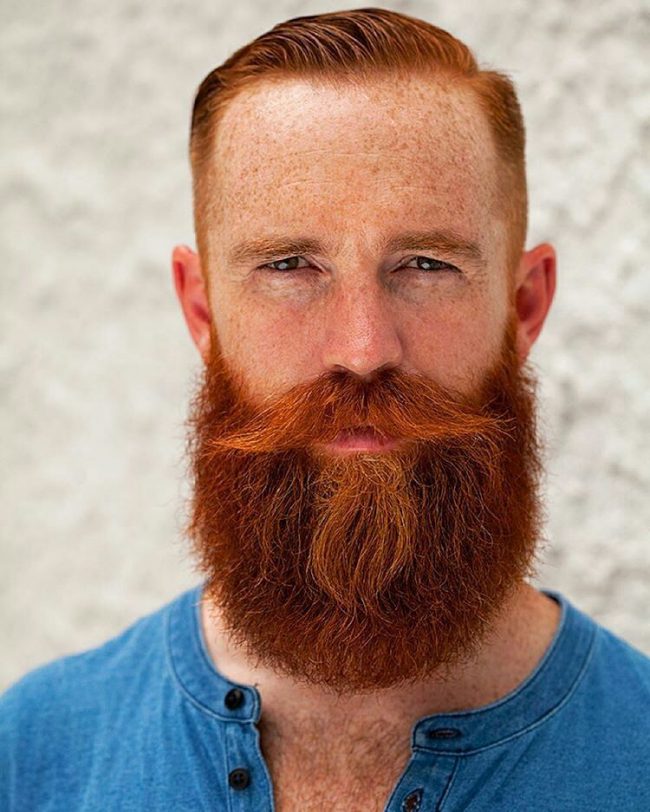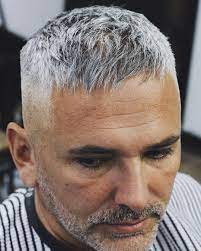
After the French Revolution, many upper-class men favored clean-shaven fashion. Those who grew beards typically included older Central European men, members of religious sects that required them, or politicians.
Simpler foam dye combines HPPS and PTDS for the safe coloring of facial hair, offering seven shades that range from ginger to true black – each offering up to twelve applications on short beards.
How it grows
Various factors influence the rate and appearance of beard hair growth. Although genetics cannot be controlled directly, diet and lifestyle decisions can have a great deal of influence over when facial hair grows and its thickness or sparseness when it does arrive.
Typically, the initial week of growth is the fastest. You should notice an increase in facial stubble gradually as individual hairs lengthen over the first seven days; during this period, some parts of your face may have more stubble than others. This is just part of the growth process and should even out over time.
Once your beard reaches “terminal length” – when hairs begin to naturally die and be replaced by new growth – its rate of growth will slow considerably, but this doesn’t mean it stops growing altogether; just that you must wait for new hairs to mature before being able to shape and style your facial hair properly.
Maintaining clean skin is the cornerstone of healthy beard growth. A gentle cleanser suitable for your face can help remove dirt and oil that clogs hair follicles, potentially slowing or stopping their development altogether. Exfoliating regularly using a scrub or cleansing brush can also stimulate hair follicles to encourage faster beard growth.
A protein-rich diet can boost beard growth by strengthening the keratin, forming its foundation. Regular exercise and sufficient sleep also play an integral role in keeping hair healthy – and may even make your beard appear thicker!
Some medical conditions can optimally impede beard growth, including the autoimmune disorder alopecia areata, resulting in patchy or thin hair on your face and body. You should speak to your physician about prescription-strength medicines like minoxidil (Rogaine) that could stimulate facial hair growth while covering up thin spots on the beard.
What causes it to grow
Your facial hair growth depends heavily on genetics; its timing, direction, and rate rely heavily on the genes passed down from both parents.
If you inherited a beard that grows slowly genetically, reaching your desired goal of having a complete and mature beard could take years. But other factors can accelerate beard growth faster and encourage thicker and healthier beard growth.
Applying beard oil to your face can help maintain healthy, moisturized skin and beard hair, preventing itchy, flaky skin and beardruff. A quality beard oil will also stimulate hair follicles to increase the production rates of new strands.
Once your stubble reaches five o’clock shadow length, you should notice visible growth and patchiness in different parts of your beard. Each area may grow at its rate – for instance, mustaches or chins might take longer to fill out than cheeks!
Testosterone, a male hormone, has been associated with faster beard growth, though the exact reason remains unclear. One theory suggests that elevated testosterone levels promote facial hair follicles to stay in anagen for longer, leading to faster beard development.
The lifecycle of beard hair can be divided into three distinct phases or stages: Anagen, Catagen, and Telogen. During the Anagen phase, follicles grow normally for up to six years before entering the Catagen stage, where production slows significantly until hair reaches the terminal length and falls out. When that happens, new follicles will emerge to start the cycle again.
As you cultivate a beard, you must ensure it remains neat. If some areas of your beard are growing faster than others, trimming back the slower-growing sections could encourage the more prominent ones to catch up more quickly. A beard brush will also help direct hairs for an even appearance and maintain proper grooming of your beard.
How to encourage it to grow
You can employ various strategies to speed the growth of beard hair. Heredity plays the most crucial role, but you can help accelerate it by eating a nutritious diet rich in protein, such as nuts and meats, as well as engaging in physical activities that stimulate blood circulation and follicle stimulation, such as regular workouts that boost blood flow to boost anagen phase growth rates. Sleep is also critical – aim for seven or eight hours every night so cellular repairs and growth processes can occur while you sleep.
Biotin is another essential nutrient for hair growth, along with vitamins A, C, and E. An easy way to obtain these is through whole foods like avocados, spinach, sweet peppers, and eggs or by taking a daily vitamin B complex supplement, including thiamin, riboflavin, and niacin.
Be sure to regularly trim your beard. A thick neck scruff hanging down over your Adam’s apple won’t do you any favors in terms of style (unless you happen to be David Beckham, Adam Levine, or Shia Labeouf!) and can leave you looking messy and disorganized – set a neckline and keep it under control – bearing is an ongoing process. It could take time before you see the desired results!
What to avoid
As part of growing a beard, your skin and hair must stay in good condition. To do so successfully, this means not smoking, drinking in moderation, limiting sun exposure as much as possible, eating whole, unprocessed foods, and limiting aspartame usage, as this artificial sweetener has been known to produce toxins that attack hair follicles directly. These factors will all work towards creating the ideal beard environment.
Get plenty of protein. Sources include eggs, poultry, dairy products, and legumes like lentils. Salmon and tuna fish contain omega-3 fatty acids, possibly reducing heart disease risk.
Vitamin and mineral-rich foods, like vegetables such as kale, spinach, and broccoli, are essential to beard growth. Alfalfa sprouts also stimulate testosterone production, stimulating facial hair follicles for growth.
Beard growth may also benefit from eating foods high in zinc. Zinc can be found in meat, nuts, beans, and fortified cereals and is an antioxidant that slows down cellular aging and hair follicle damage.
Eat foods high in vitamin C to protect and promote collagen formation in your face, scalp, and skin. Vitamin C also has the bonus of binding DHT and testosterone to the SHBG protein, making their use for hair growth difficult.
Avoiding harsh shampoos and conditioners is also crucial. Generic shampoos may strip your beard of its natural oils, leaving it dry and brittle, while these sebum-producing glands could clog your pores, leading to acne breakouts.
Before beginning to shave your beard, apply pre-shave gel. This will soften hairs, making them easier to cut without curling back into your skin and becoming ingrown hairs. Also, gently wash with moisturizing soap, as over-rubbing can lead to itching or irritation of the skin beneath your beard.

